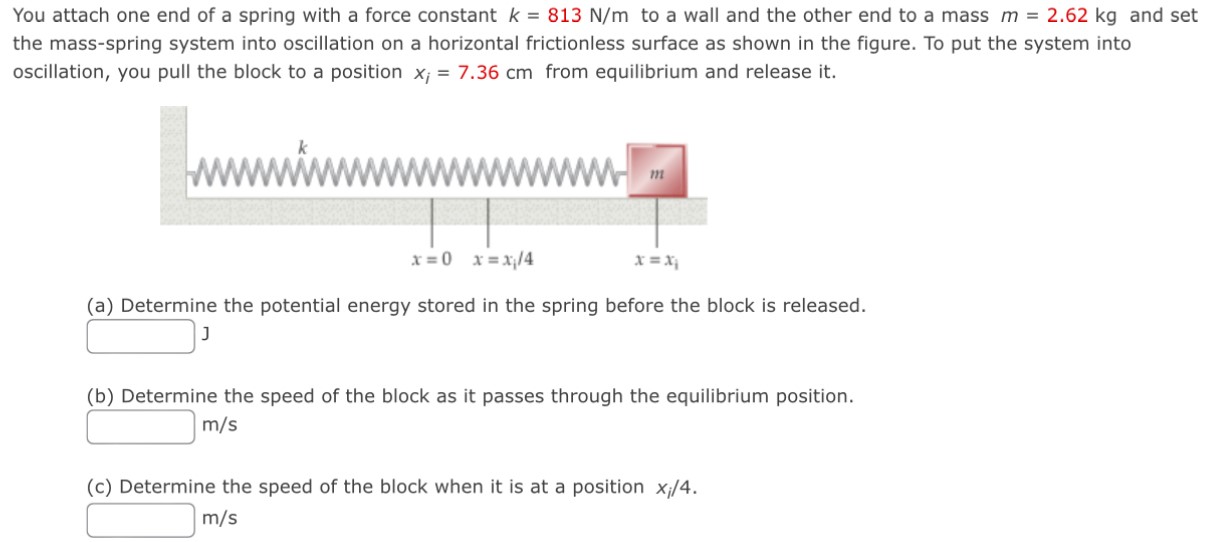You attach one end of a spring with a force constant k = 813 N/m to a wall and the other end to a mass m = 2.62 kg and set the mass-spring system into oscillation on a horizontal frictionless surface as shown in the figure. To put the system into oscillation, you pull the block to a position xi = 7.36 cm from equilibrium and release it. (a) Determine the potential energy stored in the spring before the block is released. J (b) Determine the speed of the block as it passes through the equilibrium position. m/s (c) Determine the speed of the block when it is at a position xi/4. m/s
